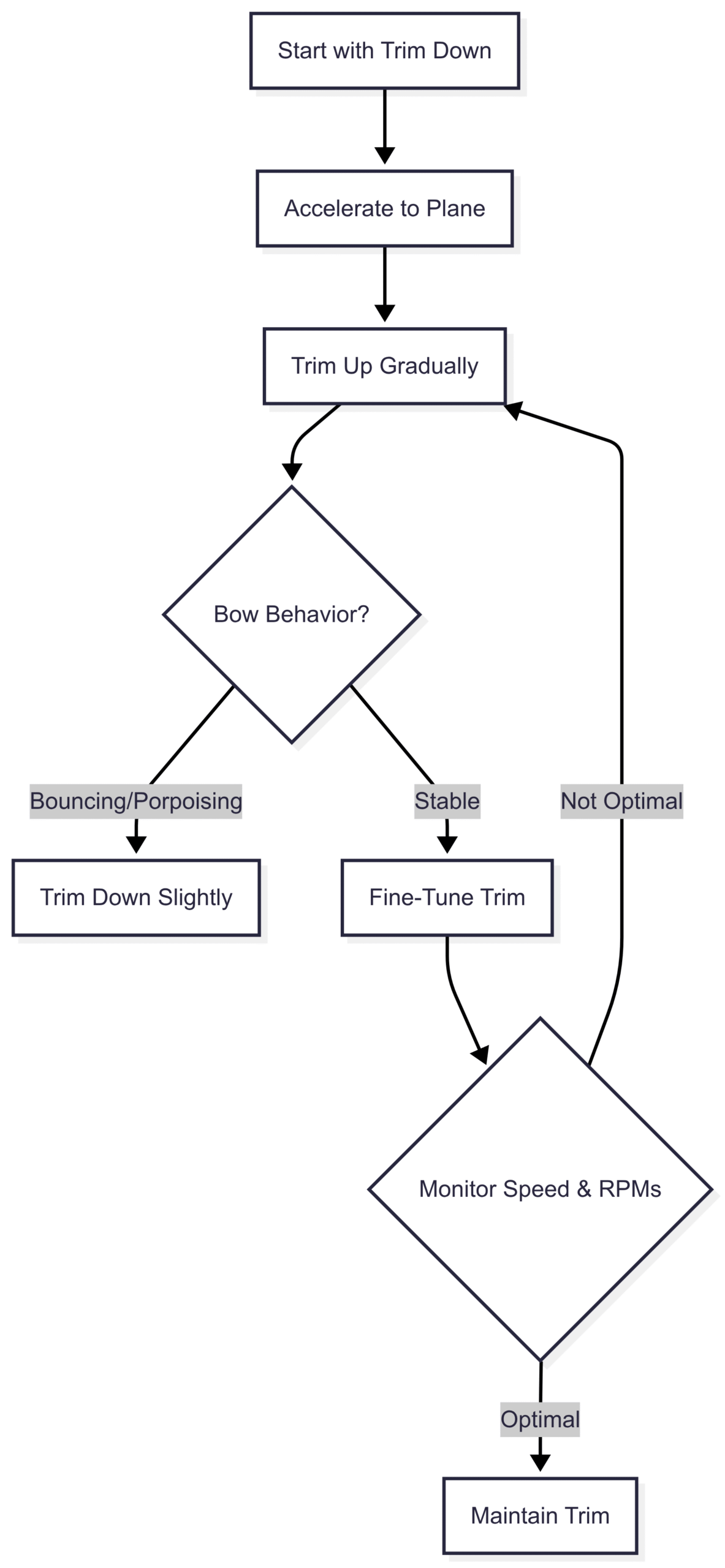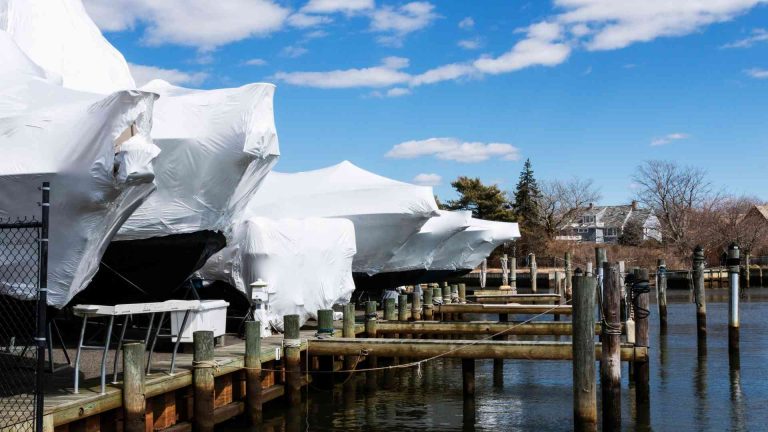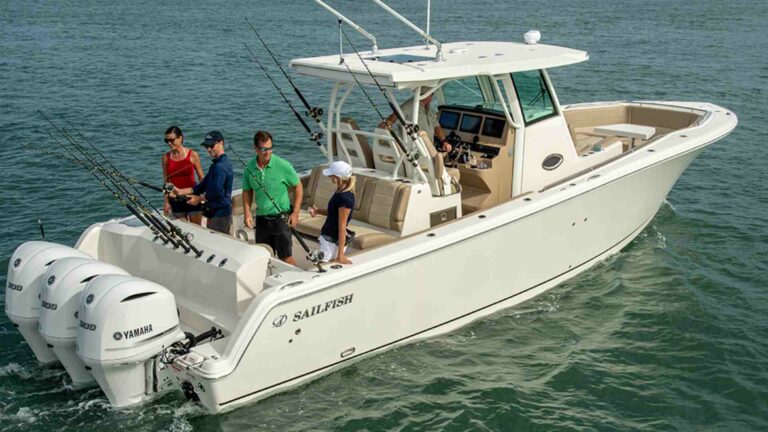How to Trim a Boat: Trimming Your Boat in 5 Simple Steps
Learn how to trim a boat in 5 simple steps to boost performance, save fuel, and ensure a smooth ride. Master boat trim with our expert guide.
Properly trimming a boat is a critical skill for any boater aiming to optimize performance, improve fuel efficiency, and ensure a comfortable ride. Whether you’re a novice or an experienced captain, understanding how to adjust your boat’s trim—using the outboard motor, sterndrive, or trim tabs—can transform your time on the water. This guide will walk you through the five essential steps to trim a boat effectively, explain the mechanics behind trim systems, and provide advanced techniques for handling various conditions. With practical tips, troubleshooting advice, and maintenance guidance, you’ll learn how to make your boat glide smoothly, save fuel, and handle like a dream.
What is Boat Trim?
Boat trim refers to the running angle of the boat as it moves through the water, specifically how the bow (front) is positioned relative to the stern (rear). Adjusting trim involves changing the angle of the outboard motor or sterndrive, or using trim tabs, to raise or lower the bow. This adjustment directly impacts the boat’s performance, fuel efficiency, and handling.
Think of trim as similar to adjusting a car’s suspension for better road handling. Trimming up lifts the bow, reducing hull contact with the water, which decreases drag and increases speed. Trimming down lowers the bow, improving stability and helping the boat get on plane (when the hull rises to skim the water’s surface) more quickly. Mastering trim ensures your boat operates efficiently, handles well in different conditions, and provides a comfortable ride for passengers.
Why Trim Matters
Proper trim affects several aspects of boating:
- Fuel Efficiency: Correct trim reduces drag, allowing the boat to move faster with less fuel.
- Performance: Optimal trim settings improve speed and handling, making the boat more responsive.
- Comfort: The right trim prevents excessive bouncing (porpoising) or slamming into waves, ensuring a smoother ride.
- Safety: Proper trim enhances control, especially in rough seas, reducing the risk of losing control or taking on water.
The Mechanics of Boat Trim
Boat trim is controlled by adjusting the angle of the outboard motor or sterndrive relative to the boat’s transom, typically through a range of about 20 degrees. The trim system uses hydraulic rams to tilt the propeller shaft, which alters the direction of thrust. Here’s how it works:
- Neutral Trim: When the propeller shaft is parallel to the water surface, the trim is neutral. All thrust pushes the boat forward, maximizing efficiency.
- Negative Trim: Pressing the trim button down moves the gearcase closer to the transom, tilting the propeller shaft upward (up to -6 degrees). This lifts the stern and lowers the bow, ideal for getting on plane.
- Positive Trim: Pressing the trim button up tilts the gearcase away from the transom, pointing the propeller shaft downward. This lifts the bow and reduces drag, improving speed at higher velocities.
A simple rule: the bow moves in the same direction as the trim button. Press up, the bow rises; press down, the bow lowers.
Trim Tabs: The Unsung Heroes
Trim tabs are adjustable metal plates mounted on the transom that fine-tune the boat’s side-to-side balance and running attitude. They act like small rudders, pushing against the water to level the boat or adjust its pitch. Modern boats often feature automatic trim tab systems with gyroscopic sensors that adjust tabs hundreds of times per second to maintain a stable running attitude. These systems are especially helpful for beginners, as they reduce the need for constant manual adjustments.
Without trim tabs, you might struggle to:
- Balance uneven passenger or gear loads.
- Counteract crosswinds that tilt the boat.
- Get on plane quickly with heavy loads.
- Maintain a comfortable ride in choppy conditions.
Key Terminology
Before diving into the steps, let’s clarify some common terms:
- Power Trim: The system that adjusts the outboard or sterndrive angle using a toggle button on the throttle or dash.
- Trim Tabs: Plates on the transom that adjust the boat’s side-to-side balance and pitch.
- Planing: When the boat rises to skim the water’s surface, reducing drag.
- Running Attitude: The angle of the hull relative to the water.
- Porpoising: Rhythmic up-and-down bouncing of the bow due to excessive positive trim.
5 Simple Steps to Trim a Boat
Mastering boat trim is straightforward with these five steps. Whether you’re using power trim or manual adjustments, this process will help you achieve optimal performance.
Step 1: Start with the Engine Trimmed Down
Begin with the engine or sterndrive fully trimmed down (negative trim) and trim tabs fully deployed. This position maximizes stern lift and lowers the bow, helping the boat get on plane quickly during takeoff. Negative trim ensures the propeller’s thrust pushes the stern up and the bow down, allowing the hull to roll onto the water’s surface efficiently.
Why It Matters: Starting with the trim up can cause the bow to point skyward, blocking your view and making it harder to plane. This wastes fuel and strains the engine.
Step 2: Accelerate to Cruising Speed
Push the throttle forward smoothly to accelerate. As the boat gains speed, it will begin to plane, with the bow rising slightly and the hull feeling lighter on the water. Monitor the boat’s behavior—when it feels stable and the bow is no longer plowing through the water, you’re on plane.
Pro Tip: Avoid sudden throttle bursts, as they can cause instability or excessive bow rise. Smooth acceleration is key to a controlled transition.
Step 3: Begin Trimming Up
Once on plane, use the trim button to slowly raise the engine or sterndrive (positive trim). Make small, incremental adjustments, typically in short bursts of 1-2 seconds. As you trim up, the bow will rise, reducing hull contact with the water and decreasing drag.
What to Watch For:
- The boat’s speed should increase.
- Steering will feel lighter.
- Spray from the hull will move aft, indicating reduced drag.
Step 4: Find the Sweet Spot
Continue trimming up until the boat reaches its most efficient running attitude, where speed peaks and drag is minimized. You’ll know you’ve gone too far if the bow starts to bounce (porpoise) or the propeller begins to aerate (lose grip), causing a drop in speed despite rising engine RPMs.
Signs of Over-Trimming:
- Porpoising: The bow bobs up and down rhythmically.
- Propeller Aeration: The engine revs higher, but speed decreases as the prop loses traction.
If either occurs, trim down slightly until the boat stabilizes.
Step 5: Fine-Tune for Efficiency
Once you’ve found the approximate sweet spot, make small adjustments to optimize performance. Trim up slightly to see if speed increases without porpoising, then trim down a touch if needed. The goal is to find the point where the boat runs smoothly, maintains consistent RPMs, and achieves maximum speed with minimal fuel consumption.
Quick Check:
- The bow should sit about one-third out of the water.
- The hull’s spray should break near the middle or aft of the boat.
- The engine should run at optimal RPMs for your cruising speed (consult your engine manual for specifics).
Adjusting Trim for Different Conditions
Trimming isn’t a one-size-fits-all process. The optimal trim setting depends on speed, load, and sea conditions. Here’s how to adjust for various scenarios:
Speed
- Low Speeds: Keep the trim down to maintain control and prevent the bow from rising too high.
- Cruising Speeds: Trim up gradually to lift the bow and reduce drag. Find the sweet spot where speed peaks without porpoising.
- High Speeds: Use slightly more positive trim to maximize speed, but watch for aeration or instability.
Load
- Heavy Load: More passengers or gear in the bow requires more positive trim to lift it. A stern-heavy load may need less trim to avoid excessive bow rise.
- Light Load: Trim up slightly more, as the boat will plane more easily with less weight.
Sea Conditions
- Calm Water: Trim up for better fuel efficiency and speed, as the boat can handle a higher running attitude.
- Head Seas (Waves from the Front): Trim down about 25% from your normal setting to keep the bow low, allowing the hull’s sharp entry to cut through waves. Use trim tabs to prevent excessive bow rise.
- Following Seas (Waves from Behind): Trim up slightly to keep the bow from digging into waves. Reduce tab deflection and match your speed to the waves to avoid stuffing the bow.
- Beam Seas (Waves from the Side): Lower the windward trim tab to level the boat. Combine moderate positive trim with tab adjustments for stability.
Using Trim Tabs Effectively
Trim tabs provide precise control over the boat’s attitude. Follow these guidelines:
- On Plane: Start with tabs fully up, then lower them gradually until the spray breaks mid-hull.
- Uneven Loads: If the boat leans to one side, raise the tab on the high side or lower the tab on the low side.
- Beam Seas: Lower the windward tab to counteract the tilt caused by wind or waves.
- Rough Water: Use tabs to keep the bow down for a smoother ride.
Timing: Tabs respond slowly, so wait 3-5 seconds between adjustments to assess their impact.
Manual Trim for Smaller Outboards
Boats with smaller outboards may lack power trim systems. Instead, trim is adjusted manually by moving a pin in the motor bracket, typically through a series of four or five holes. This adjustment sets the outboard’s angle and must be done while the boat is stationary and the engine is off.
Steps for Manual Trim:
- Consult your owner’s manual for specific instructions.
- Move the pin one hole at a time to adjust the angle.
- Test the boat’s performance after each adjustment:
- Too Low: The boat planes easily but plows at speed, reducing efficiency.
- Too High: The boat struggles to plane, with excessive bow rise.
- Find a compromise where the boat planes efficiently, lifts the bow slightly at speed, and handles well.
Load Adjustments: Move the pin up one hole for light loads or down for heavy loads to optimize performance.
Advanced Trim Techniques
Experienced boaters use trim to adapt to specific conditions and maximize performance. Here are advanced tips:
- Habit Formation: Always trim down fully when coming off plane to prepare for the next takeoff.
- Automatic Trim Systems: Consider upgrading to an automatic trim system (e.g., Mercury Active Trim or Zipwake) for hands-free adjustments based on speed and conditions. These systems typically cost $500-$2,000, depending on the boat size and system complexity.
- Monitoring Instruments: Use your speedometer, tachometer, and fuel flow meter to fine-tune trim. Optimal trim maximizes speed while keeping RPMs in the engine’s recommended range.
- Rough Water Navigation: In heavy chop, combine lower trim settings with reduced speed to maintain control and minimize pounding.
Chart: Trim Adjustment Workflow

This chart illustrates the iterative process of trimming a boat, emphasizing the need for small adjustments and constant monitoring.
Troubleshooting Common Trim Issues
Even with proper technique, you may encounter trim-related problems. Here’s how to address them:
| Issue | Symptoms | Solution |
|---|---|---|
| Porpoising | Bow bounces rhythmically | Trim down slightly; adjust tabs to stabilize; increase speed if safe. |
| Excessive Spray | Water shoots from hull sides | Trim up gradually; monitor spray pattern moving aft. |
| Slow to Plane | Boat struggles to lift onto plane | Ensure trim is fully down; check load distribution; deploy tabs fully. |
| Poor Fuel Economy | High fuel consumption at normal speeds | Find sweet spot by trimming up until speed peaks; use tabs to reduce drag. |
Maintaining Your Trim System
Regular maintenance ensures your trim system operates smoothly and prevents costly repairs. Follow these steps:
- Monthly Checks:
- Inspect hydraulic fluid levels in the trim pump (typically SAE 10W-30 or power trim fluid; check your manual).
- Look for leaks around fittings and rams.
- Grease pivot points to prevent corrosion.
- Trim Tabs:
- Check actuators for corrosion or marine growth.
- Verify mounting brackets are secure.
- Clean electrical connections to prevent failure.
- Grease actuators at the start and end of the boating season.
- Warning Signs:
- Slow response times or uneven movement.
- Unusual noises (grinding, whining).
- Fluid leaks around rams or fittings.
- Troubleshooting:
- Consult your owner’s manual for specific diagnostics.
- Note when issues occur and any unusual sounds for mechanics.
- Seek a professional marine mechanic if problems persist.
Trim System Specifications and Costs
| Component | Description | Approx. Cost |
|---|---|---|
| Power Trim System | Hydraulic system for outboard/sterndrive angle adjustment | $500-$1,500 (OEM) |
| Automatic Trim System | Gyroscopic system for hands-free trim adjustments (e.g., Mercury Active Trim) | $500-$2,000 |
| Trim Tabs | Manual or hydraulic tabs for side-to-side leveling | $300-$1,200 (per pair) |
| Trim Fluid | SAE 10W-30 or manufacturer-specific hydraulic fluid | $10-$20 per quart |
Note: Costs vary based on boat size, brand, and installation fees. Check with manufacturers like Mercury, Yamaha, or Bennett for exact pricing.
Learning to Drive a Boat Like a Pro
Trimming a boat is just one part of becoming a skilled boater. To accelerate your learning and avoid costly mistakes, consider hands-on training with a U.S. Coast Guard-licensed captain. A few hours of personalized instruction can teach you:
- Tailored trim techniques for your boat model.
- Safe navigation in rough water.
- Fuel-saving strategies.
- Advanced docking and maneuvering skills.
- Local waterway knowledge.
Search for certified instructors through organizations like the U.S. Powerboat Association or local marinas to book a lesson.
Conclusion
Mastering boat trim is a game-changer for any boater. By following the five simple steps—starting with the trim down, accelerating smoothly, trimming up, finding the sweet spot, and fine-tuning—you can unlock your boat’s full potential. Combine these techniques with proper trim tab use, regular maintenance, and an understanding of how speed, load, and sea conditions affect trim, and you’ll enjoy smoother rides, better fuel economy, and greater control. Whether you’re cruising calm waters or navigating choppy seas, proper trim ensures your boat performs at its best. Practice these steps, monitor your boat’s behavior, and consider professional training to take your skills to the next level.
Happy Boating!
Share How to Trim a Boat: Trimming Your Boat in 5 Simple Steps with your friends and leave a comment below with your thoughts.
Read The Top 10 Boat Museums to Check Out This Winter until we meet in the next article.






